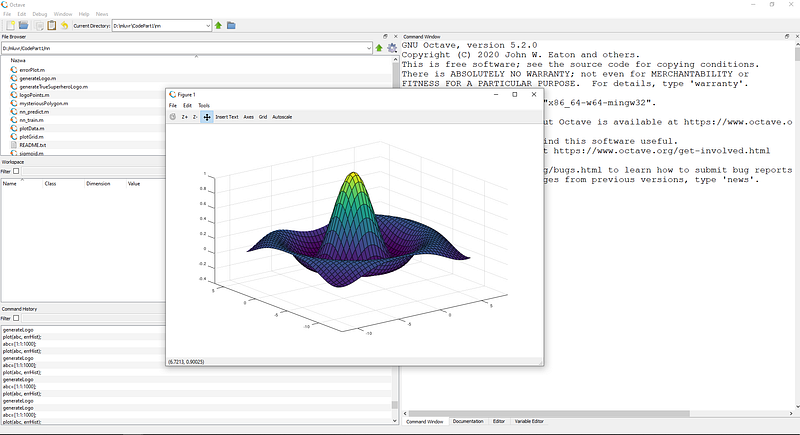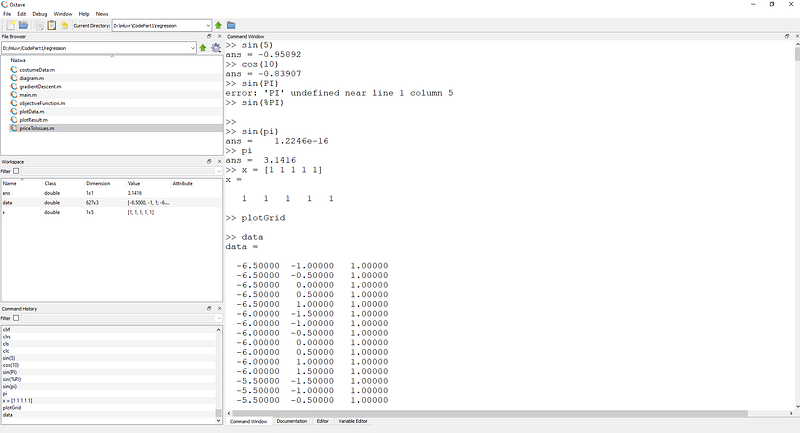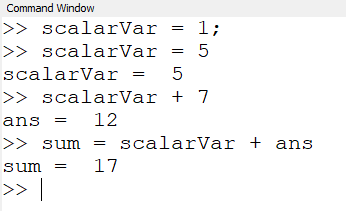Octave: A Quick Guide to Scientific Programming
Written on

GNU Octave is a free programming language designed for scientific applications. It features a robust mathematical framework, a straightforward syntax, and integrated visualization tools. This comprehensive package includes both a graphical user interface (GUI) and command-line interface, resembling the functionality of standard Integrated Development Environments (IDEs) used for languages like Java or Python.
Octave is suitable for various mathematical computations, simulations, and data science projects. If you're acquainted with Matlab or need a rapid prototyping tool for scientific concepts, Octave is worth exploring. Below, we will delve into practical examples to help you commence your journey with this software.
Installation
For users of Debian-based systems (such as Ubuntu), Octave can be installed via the system's package manager. If you encounter missing packages, consult the documentation for a list of necessary packages tailored to your OS version. For instance, Ubuntu 20.04 requires specific commands for installation.
For those using Windows, simply download the installer executable or a zip file and extract it. The latest version, 5.2, along with instructions for macOS and BSD systems, can be found on the official website.
GUI Overview

The Octave GUI comprises four primary sections, the most significant of which is the Command Window, occupying the majority of the screen. This area allows you to enter commands interactively, with immediate execution and result display.
At the bottom of the Command Window, there are three additional tabs. The second tab is Documentation, which provides an offline reference for the entire Octave documentation, organized into thematic sections like Data Types and Statements. It also features a separate Functions Index with examples.
The remaining two tabs are the Editor, a minimalistic text editor for writing Octave code with syntax completion, and the Variable Editor, enabling you to select and modify variable values, particularly helpful for multidimensional variables.
On the left side of the main window, you'll find three panels: the top panel is a File Browser for managing your project directory, the middle panel displays the Workspace with all active variables and their brief descriptions, while the bottom panel shows the Commands History for searching and filtering past commands.
Working with Data
Data and variables are fundamental components in programming. Let's explore how to define various variable types and load files in Octave.

Defining variables in Octave is quite intuitive. You simply assign a name, use the assignment operator “=”, and specify the desired value. Scalar values such as integers, floating-point numbers, and strings (enclosed in quotes) can be used. If a value is entered without a name, Octave assigns it to the ans variable, which holds the last value entered directly in the Command Window. This ans variable can be manipulated like any other variable.
A useful trick: if you end a line with a semicolon “;”, Octave suppresses the output. In contrast, commands without a semicolon will display their results in the console.
Defining Vectors
A vector is a variable that holds multiple values, akin to an array. To create a vector in Octave, specify the vector name followed by values separated by spaces, all enclosed in square brackets.
To define a column vector, separate the values with semicolons.
Defining Matrices
Matrix definitions follow similar principles as vectors. The key rules include: 1. Separate values within a matrix row with spaces. 2. Separate rows with semicolons.
Useful Functions for Variable Definition
To generate a variable filled with zeros, you can use the zeros(m,n,k,...) function, where m, n, and k represent dimensions. Similarly, ones(m,n,k,...) creates a variable filled with ones.
For generating vectors with specific increments, you can define a vector that increments from zero to ten by 0.5. The syntax for this is straightforward, using a colon to separate the start, step, and end values.
Accessing Elements
Remember that Octave uses one-based indexing, meaning that the first element is indexed as 1 (unlike the zero-based indexing in many other languages). To access an element, specify its indices within parentheses.
Loading Data
You can easily load data using the load(filename.m) function, which expects a file with comma-separated values. For example, if you have a file named myData.m, you can assign it to a variable by calling the load function.
Octave also supports advanced loading features, such as binary files and custom delimiters.
Basic Linear Algebra Operations
Octave's built-in mathematical capabilities make it a powerful tool for linear algebra.
Adding and Subtracting Matrices
To add or subtract matrices, use the “+” or “-” operators. Matrices of the same dimensions will have their corresponding elements added or subtracted.
Matrix Multiplication
To multiply matrices, ensure that the number of columns in the first matrix matches the number of rows in the second. Use the “*” operator for multiplication.
Scalar Matrix Multiplication
To multiply corresponding elements in matrices, utilize the dot operator “.” before the multiplication operator.
Matrix Transposition
Matrix transposition involves swapping rows with columns, achievable in Octave using the ' operator.
Solving Linear Equations
A system of linear equations can be solved by representing it with matrices that correspond to the coefficients of the variables. In Octave, you can use the left division operator “” to find the solution efficiently.
Visualization Tools
Visual representation of data is crucial for understanding problems. Octave provides built-in plotting capabilities.
Plotting Points
To create a 2D plot, use the plot function with x and y coordinates as arguments. You can customize point styles and colors.
Plotting Functions
You can also graph functions by preparing discrete coordinate vectors and their corresponding function values.
More Complex Functions
Octave's documentation offers extensive resources for exploring advanced plotting functions like plot3, meshgrid, and surf.
Useful Trick
A handy feature in Octave is the find function, which can filter data, identify anomalies, or apply thresholds. By passing a condition to the find function, you can retrieve indices of elements meeting specific criteria.
Summary
This brief tutorial equips you with essential knowledge to begin using Octave. You now understand how to define and load data, perform operations on vectors and matrices, and visualize your work.
I encourage you to leverage Octave for rapid prototyping of your ideas, especially when a full Python setup isn't accessible.
Bibliography: 1. https://www.gnu.org/software/octave/ 2. https://en.wikipedia.org/wiki/MATLAB 3. https://wiki.octave.org/Octave_for_Debian_systems 4. https://www.gnu.org/software/octave/download.html 5. https://octave.org/doc/v4.0.1/Simple-Examples.html